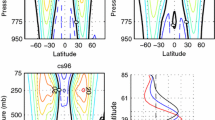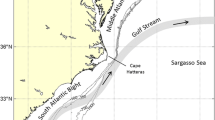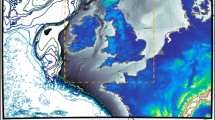Abstract
—The Coupled Ocean/Atmosphere Mesoscale Prediction System (COAMPS) is used to investigate the mutual response of a tropical squall line and the ocean. Simulated squall line compares well with the observations, and consists of counterrotating vortices, and has a bow shape bulge toward the leading edge. In addition to these features, which are also shown in the previous numerical simulations, the unique results from the coupled simulation indicate that the air–sea interaction processes within the squall line are important. They affect both the atmosphere and the ocean locally. Simulated upper ocean displays significant response to the squall line with upwelling and baroclinicity. Depth of the ocean mixed layer in the coupled simulation becomes modified due to feedback processes. Ocean temperature acts as a destabilizing factor, and the salinity as a stabilizing factor. Surface turbulent fluxes from the coupled simulation are about 10% less than that of the uncoupled simulation. The SST in the coupled simulation decreases by about 0.21°C. Predicted squall line in the coupled simulation is weaker as compared to the uncoupled simulation. This is reflected in terms of differences in surface fluxes, cloud water, rain water and vertical velocities between the two simulations.
Similar content being viewed by others
Author information
Authors and Affiliations
Additional information
Received January 31, 1998, accepted December 9, 1998.
Rights and permissions
About this article
Cite this article
Hong, X., Raman, S., Hodur, R. et al. The Mutual Response of the Tropical Squall Line and the Ocean. Pure appl. geophys. 155, 1–32 (1999). https://doi.org/10.1007/s000240050252
Issue Date:
DOI: https://doi.org/10.1007/s000240050252




